


JAMES HUTTON 1726 -
xxxxxThe Scottish geologist James Hutton, regarded as the founder of geology, travelled widely in order to inspect a variety of rock formation. His research led him to reject the doctrine of Neptunism, the idea that the earth’s physical features were created by some sudden upheaval, like flooding or an earthquake. Instead, he put forward the Plutonist theory, arguing that certain types of rock had been in a molten state, and had gradually cooled down over millions of years, amid violent eruptions (geomorphology). He published this idea in his major work Theory of the Earth, completed in 1785, but, seen as anti-
 xxxxxThe Scottish geologist James Hutton is generally regarded as the founder of geology, though his theory concerning the gradual evolution of the Earth’s landforms (geomorphology) took some years to win favour. He was born in Edinburgh and, after attending the city’s university, became a lawyer’s apprentice. He found the work boring, however, and within a year he had left to study medicine, first in Edinburgh and then at Paris and Leiden. He gained his M.D. in September 1749, but soon afterwards turned to farming in Berwickshire. Here he developed a cheap method of producing sal ammoniac, and this earned him such a good income that in 1768 he decided to return to Edinburgh and put his mind to scientific research.
xxxxxThe Scottish geologist James Hutton is generally regarded as the founder of geology, though his theory concerning the gradual evolution of the Earth’s landforms (geomorphology) took some years to win favour. He was born in Edinburgh and, after attending the city’s university, became a lawyer’s apprentice. He found the work boring, however, and within a year he had left to study medicine, first in Edinburgh and then at Paris and Leiden. He gained his M.D. in September 1749, but soon afterwards turned to farming in Berwickshire. Here he developed a cheap method of producing sal ammoniac, and this earned him such a good income that in 1768 he decided to return to Edinburgh and put his mind to scientific research.
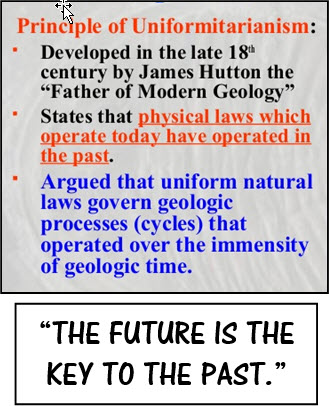 xxxxxOver the next few years he studied science in his own time, and travelled widely, inspecting rock formations and observing the long term effects of processes such as sedimentation and erosion. Then in 1785 he presented a number of papers to the Royal Society of Edinburgh based on his findings. In these papers he denounced the doctrine of Neptunism, the belief that the Earth’s geological features were the result of abrupt, violent changes, like floods and earthquakes. In its place he put forward the Plutonist theory, maintaining that, at one time, certain types of rock had clearly been in a molten state, and had cooled down at varying rates, causing a succession of violent upheavals -
xxxxxOver the next few years he studied science in his own time, and travelled widely, inspecting rock formations and observing the long term effects of processes such as sedimentation and erosion. Then in 1785 he presented a number of papers to the Royal Society of Edinburgh based on his findings. In these papers he denounced the doctrine of Neptunism, the belief that the Earth’s geological features were the result of abrupt, violent changes, like floods and earthquakes. In its place he put forward the Plutonist theory, maintaining that, at one time, certain types of rock had clearly been in a molten state, and had cooled down at varying rates, causing a succession of violent upheavals -
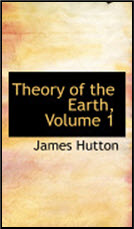 xxxxxThree years later, in 1788, two of these papers were published in the Transactions of the Royal Society of Edinburgh under the title Theory of the Earth. In this essay -
xxxxxThree years later, in 1788, two of these papers were published in the Transactions of the Royal Society of Edinburgh under the title Theory of the Earth. In this essay -
xxxxxBut this theory was fiercely resisted, particularly on Christian grounds. Although much data had already been gleaned concerning rock formation, and the significance of strata and fossils, each aspect had been virtually studied in isolation, not as part of an overall theory of geology. As a result, it was still generally believed that the Earth had been created no more than some 6000 years ago, its visible rocks having been formed out of the huge quantities of minerals which had been deposited in the course of a great flood. And to a very large extent, this strict biblical interpretation of creation -
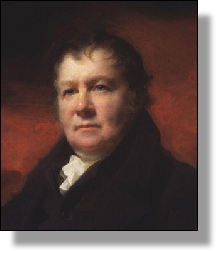
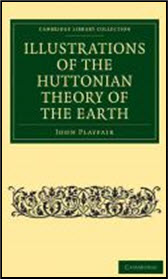 xxxxxItxwas left to his friend, the Scottish geologist John Playfair (1748-
xxxxxItxwas left to his friend, the Scottish geologist John Playfair (1748-
xxxxxApartxfrom Playfair, Hutton numbered among his friends the Scottish chemist Joseph Black, and the Scottish geologist James Hall (1761-
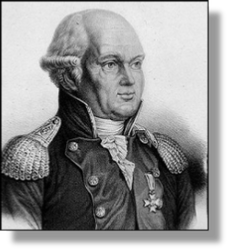
xxxxxIncidentally, the Neptunist school of geology was led by the German geologist and mineralogist Abraham Gottlob Werner (1750-
Acknowledgements
Hutton: detail, by the Scottish portrait painter Henry Raeburn (1756-
Including:
John Playfair

G3b-


